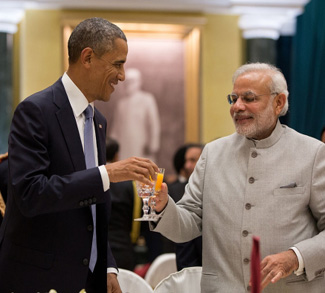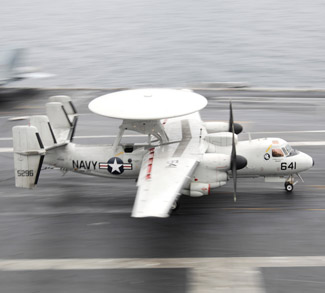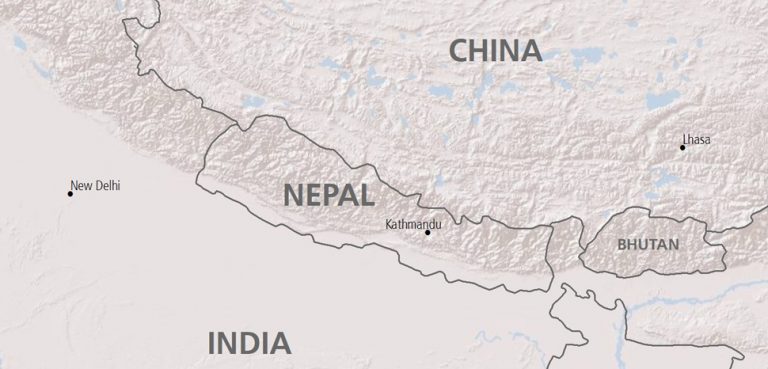In an attempt to forge closer ties, former US Secretary of Defense Leon Panetta referred to India as a ‘lynchpin’ of America’s pivot to the Asia-Pacific. Well Obama doctrine finally got its field test in India, a chance for the president to ‘walk the walk’ of the US pivot. And the results have some wondering if Washington went overboard in its offer to transfer weapons technology for co-production and development. The logic behind the move seems to be to build up the military capabilities of the South Asian power, primarily as a way to counterbalance any aggressive moves from China.
Bolstering India’s defense capability will guarantee the balance of power between these rival Asian powers. Both India and the United States will gain extra leverage against China from a strategic partnership. The US Navy will be able to exercise its power and wield ‘broader’ influence in the Indian Ocean, helping Indian naval fleets to reign supreme in the region. On the lose-lose side of the argument, there is the possibility of antagonizing a common foe in China with the veiled threat posed by the mantra of ” the importance of safeguarding maritime security and ensuring freedom of navigation and overflight throughout the region, especially in the South China Sea.”
Civil-nuclear technology transfer and new commercial arrangements between the superpower and the South Asian power hold promise for future political, economic, and commercial prospects. The strategic partnership between the United States and India goes a step beyond the US pivot to the Pacific and ventures into the Indian Ocean region (IOR). To some there are echoes here of the Marshall Plan for containing communism in Europe.
The signing of the Defense Framework Agreement in 2005 signified a convergence of strategic objectives of both India and the United State. Slow progress in realizing the objectives of the framework for defense cooperation has not dissuaded the decision makers from renewing their commitment to support ‘stronger military-to-military engagement, including deeper maritime cooperation and increased opportunities in technology and trade.’
The Defense Technology and Trade Initiative (DTTI) will usher in a new era of defense industrial cooperation between the United States and India. Under this initiative, a working group will be formed to explore aircraft carrier technology sharing and design. It will also explore possible cooperation on the development of jet engine technology. Owing to significant bureaucratic hurdles and operational issues, initially only the production of low-end systems will be undertaken, such as Raven unmanned aerial vehicles (UAVs) and reconnaissance modules for the C-130J Super Hercules aircraft. Technology transfer and trade will enable US defense companies to participate in a partnership for the modernization of India’s military industrial base.
In 2013 the United States became the largest arms supplier to India, with an estimated transfer of US $1.9 billion. India emerged as the world’s largest importer of arms with total overseas purchases of US $5.9 billion. During the last decade, India imported arms worth about US $10 billion from the United States, consisting mostly of high-end military hardware. Recent purchases have included the Boeing C-17A strategic transport aircraft and P-8I maritime patrol aircraft. Manufacturing of next-generation Javelin anti-tank missiles in India by a joint venture of Raytheon and Lockheed also carries the potential to boost India’s defense capability.
Since China has acquired advanced weaponry capable of defeating American power projection in the region, its peaceful rise may not be regarded as ‘totally benign.’ Countering the deployment of Chinese naval bases, ships, and submarines in the Indian Ocean has been the main concern of an Indian government apprehensive about the military dimension of Chinese expansion.
India’s aspiration to become a leading power in the region urgently requires the modernization of its defense industries, with the avowed purpose of deterring Chinese encroachments in Southern Asia. Collaboration with the United States is essential for India to be a preeminent power in the region and at par with China. India expects to benefit from the cooperation by strengthening its military and economic power; and the United States by its active involvement in regional and bilateral security arrangements.
President Obama occupied a special place of honor as the chief guest at the Rashtrapati Bhaban on the occasion of India’s Republic Day. Prime Minister Modi’s desire to take the Indian economy to the next level by enhanced cooperation with the United States prompted the warm welcome accorded to President Obama. Optimism surrounds the vision espoused by the duo by virtue of their innate knowledge of the dynamics of the region. The leaders share a strategic vision for enhanced cooperation on mutual security and defense, and both realize the tremendous potential for economic and industrial development in the region.
America’s defense and security collaboration with India ranked high on the agenda for discussions between Indian and US representatives. Although for the most part there was a convergence in the vision espoused by the leaders of these two democracies, there are also visible patches of uncertainty. This coming together has, after all, been described as an untenable alliance for containment or encirclement by the Chinese.
Immediately after the departure of the US President, the Indian foreign minister flew to Beijing to placate the neighbor and avoid any adverse reaction from China. A meeting of the foreign ministers of India, China, and Russia in Beijing would undoubtedly review the implications of the strategic vision espoused by President Obama and Prime Minister Modi. Obviously, neither India nor the United States intends to disrupt economic relations with China since both nations hold significant stake(s) in the Chinese economy.
Why risk alienating such an important economic partner? The answer is simple: because extremely favorable factors are encouraging this on-demand strategic partnership. The partnership offers an excellent strategic fit for both nations who agree on the desired end results but differ on ways of achieving them. Apparently the partnership does not seem to represent a closed security or military alliance – such as, the North Atlantic Treaty Organization (NATO) – in a departure from the past. Prime Minister Modi deserves credit for bringing about a change in the perspective on the external relations of India by departing from the bloc power politics of the Cold War era. However, it remains uncertain as to what extent the United States would be amenable to accepting India’s preferences for partnering with opposing powers.
Entente between two of the largest democracies on the planet does not preclude any opposition to ongoing or proposed arrangements for engagement with the Russians or the Chinese in the case of India; and, in the case of the United States, any evolving relations with China and Pakistan.
The opinions, beliefs, and viewpoints expressed by the authors are theirs alone and don’t reflect any official position of Geopoliticalmonitor.com.




